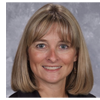An Exemplary STEM High School in Ohio: The Metro School
From Heidi Rudolph
 “Metro is designed to serve students who want a personalized and extraordinary learning experience that prepares them for a connected world where math, science and technology are vitally important. All Metro students engage in a personally relevant and academically rigorous curriculum within a safe and trusting environment.” http://www.themetroschool.org. “Metro is designed to serve students who want a personalized and extraordinary learning experience that prepares them for a connected world where math, science and technology are vitally important. All Metro students engage in a personally relevant and academically rigorous curriculum within a safe and trusting environment.” http://www.themetroschool.org.
Sounds great, doesn’t it? I am proud to say that the Metro School is found on the West campus of The Ohio State University in Columbus, Ohio. The school takes advantage of many opportunities in and around the University that benefit the students. Some staff members are Ohio State graduates, some Metro graduates will attend the Ohio State University. Students that attend Metro remain on their home school district’s register so they can participate in sports and additional activities closer to home.
“All members of the Metro community seek to improve their practice of the Metro Habits of Heart and Mind:
- Effective Communicator
- Inquiring Learner
- Active and Responsible Decision Maker
- Effective Collaborator
- Critical Thinker
- Engaged Learner”
As a mathematics teacher myself, this is part of what I have come to know as the “unwritten curriculum” that all parents want us to teach our students. In addition, “Metro is guided by the Ten Common Principles of the Coalition of Essential Schools. These 10 principles are inspiring high school redesign across the nation.”
When the Metro School opened its doors in 2006, it grew up by adding a new class of 100 freshmen each year, and with a reputation for cutting-edge educational practices. The first graduates walked out the doors in 2010 with high expectations for success in universities and other endeavors. A service learning component is in place that enhances and supports the Metro Habits of Heart and Mind philosophy of learning.
The focus of Metro is really to engage with students from all backgrounds and education experiences and to prepare them for career and college readiness through a rigorous STEM program not typically offered in most public high schools. During 9th and 10th grade years, the students prepare themselves to not only pass the Ohio Graduation test, but also must master all of their Core subjects. Performance-based tasks display the student’s ability to work collaboratively, cooperatively, and to solve real-world problems.
After successful completion of the Core phase, 11th and 12th graders engage in a new challenge to their high school experiences. “While the Core prep focus is on capacity building, the College Access focuses is on practical experiences, skill development, social maturity, critical thinking, and responsibility.” The type of learning experiences offered to upper classmen includes “bodies, digital, design, growth, innovation, and mosaic” which integrates the studies of life sciences, math and engineering, media and communication, growth of the individual, research and development, and building diverse communities. These experiences offer high school credits, internships, and possibly college coursework to eager students.
Local partners such as COSI (Columbus Center of Science and Industry), Franklin Park Observatory and the Edison Welding Institute provide internships free of charge to students who have their own transportation. It is these types of community and business partnerships that will help students become true 21st century learners, prepared to succeed in an ever-changing global economy and workplace.
As a 26-year veteran teacher of a public school in Ohio, I have always sought relevance and real-world applications for what I teach to kids. In isolation, all of our subjects seem disconnected from the world around us, and fail to help students see the beauty of problem solving in daily life. I see such exciting things happening in education these days, not the dire predictions of miserable failure and a “broken” system. Yes, things take a long time to change in the giant we call Education in America. But just take a look at this little high school in Ohio, and you will see the future that I hope for many students will be valuable and a true game-changer!
Heidi Rudolph is a math teacher at Orange High School in Cleveland, Ohio.
Back to newsletter |